Kingdoms Living Organisms
Have you tried lecturing about kingdoms living organisms? BORING! It is so much more interesting for students to rotate through stations that are full of videos, readings, graphic organizers, coloring, and other engaging activities that make the kingdoms more tangible.
Looking for more ways to streamline your lessons? Sign up for the FLIP THE SCRIPT DIGITAL COURSE today!
Why I Use Kingdoms Life Stations
We cover the kingdoms towards the end of the semester not too long before (and some after) the Biology EOC. Students are getting ready for the test and are already looking forward to the end of the school year. Since there is not much about kingdoms on the EOC, I tend to save that content for after testing. Once the EOC is over, we can pick back up with the kingdoms for the remainder of the semester. How close we are to the end of the semester will dictate how many days I spend on the stations. I would say that 2.5-3 90-min blocks are the sweet spot for these stations.
How I Use Kingdoms of Life Stations
I break up the stations by kingdoms, with the exception of bacteria. Meaning, I have stations for only 4 of the 6 kingdoms. We cover bacteria in great depth prior to the EOC and throughout other units, so I do not include them in my stations. On day 1, I have 6 stations that cover both the Plantae and Animalia kingdoms. On day 2, I have 6 stations that cover both the Protista and Fungi kingdoms. If I need more time for students to finish any stations from day 1 or day 2, I will allow additional time on day 3 to complete the activities.
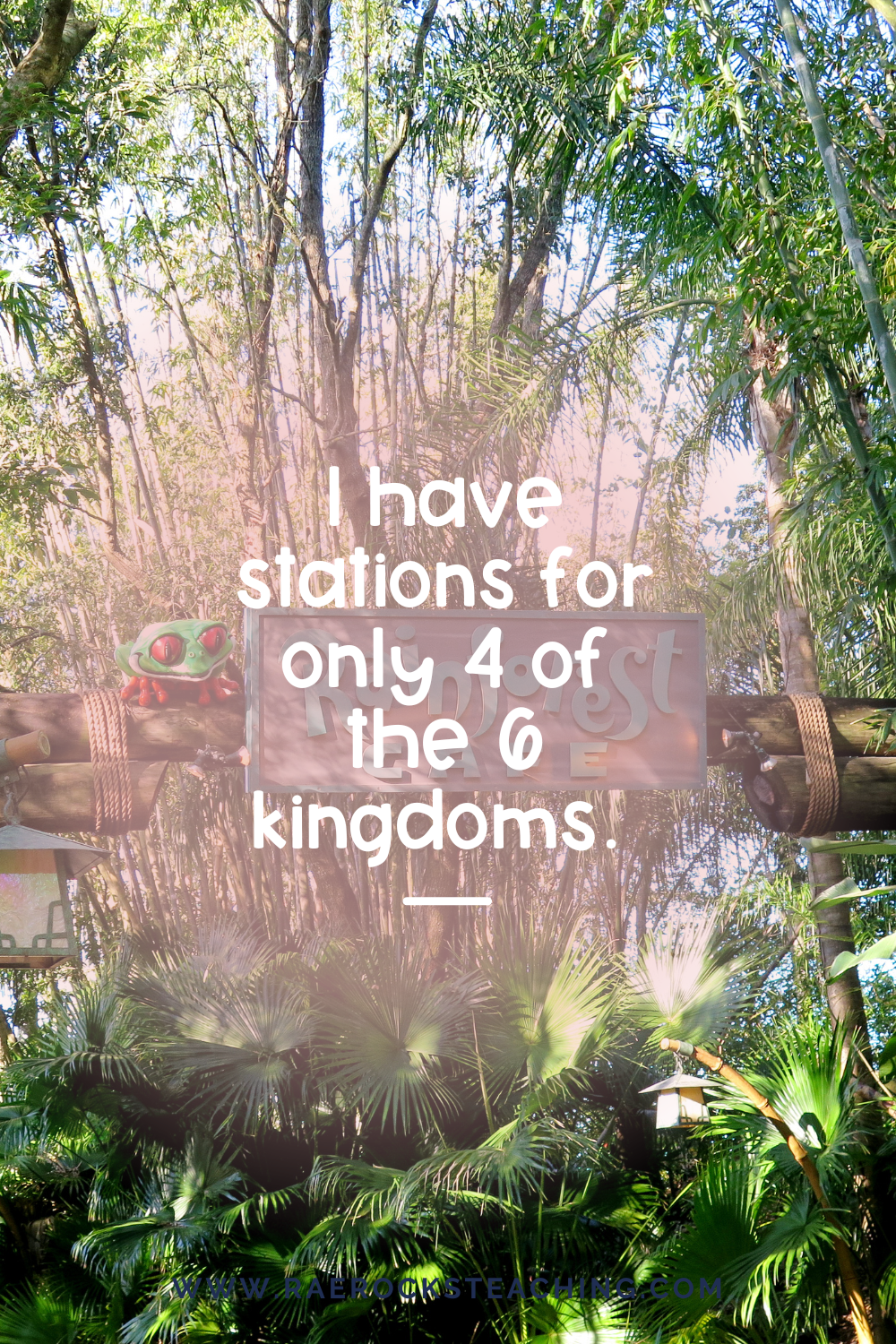
-
Save
Kingdoms Living Organisms Plantae and Animalia Stations
Station 1: Flower Structure & Reproduction
This station has a reading passage that explains the structure of a flower along with its reproduction. Students will color the parts of a diagram as described in the reading. I linked the resource from Biology Corner
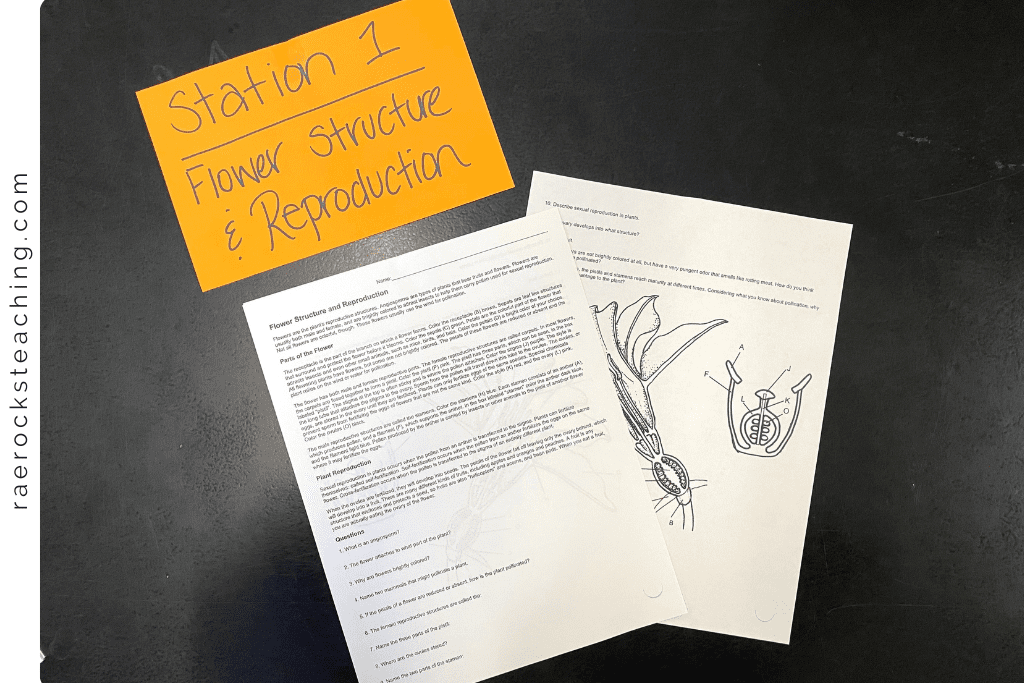
-
Save
Station 2: Leaf Anatomy
This station also has a reading passage that explains the structure of a flower along with its reproduction. Students will color the parts of a diagram as described in the reading. I linked the resource from Biology Corner.
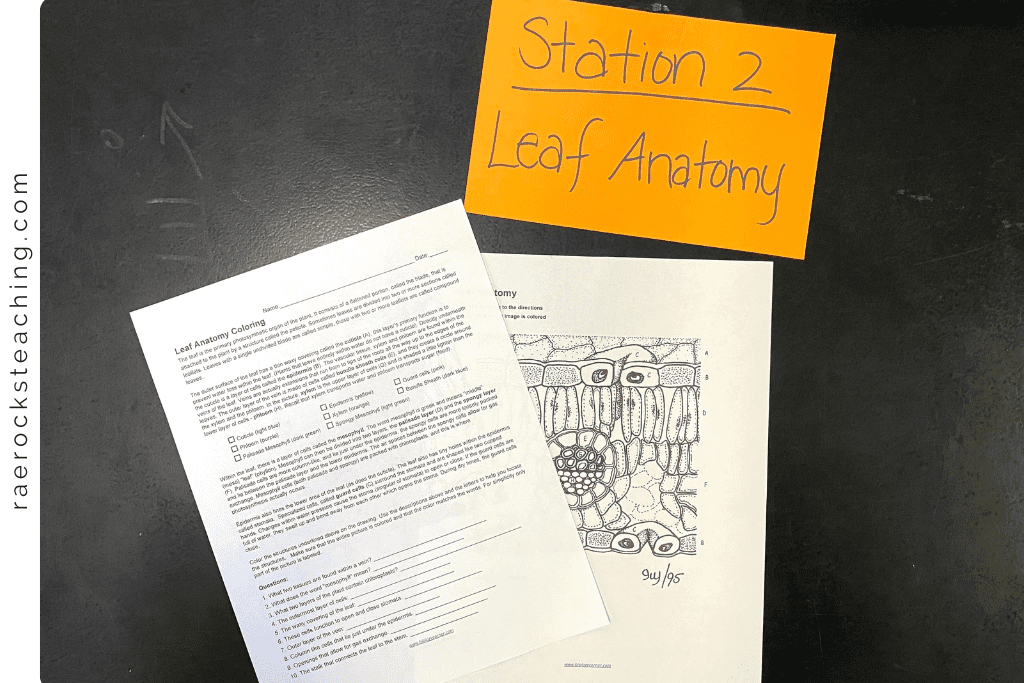
-
Save
Station 3: Plantae Concept Map
I have my students complete a concept map on Plantae by using the PowerPoint notes I have laid out for them. This reinforces what they are learning and they have to make sense of it to complete the concept map.
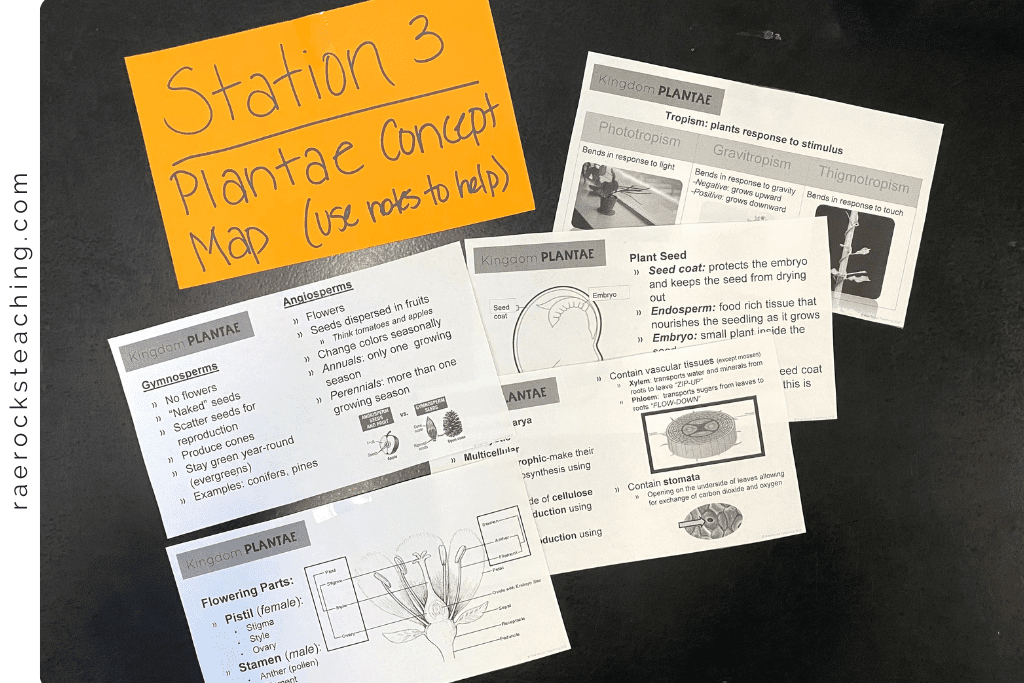
-
Save
Station 4: Animalia Concept Map
I also have my students complete a concept map on Animalia by using the PowerPoint notes I have laid out for them. This reinforces what they are learning and they have to make sense of it to complete the concept map.
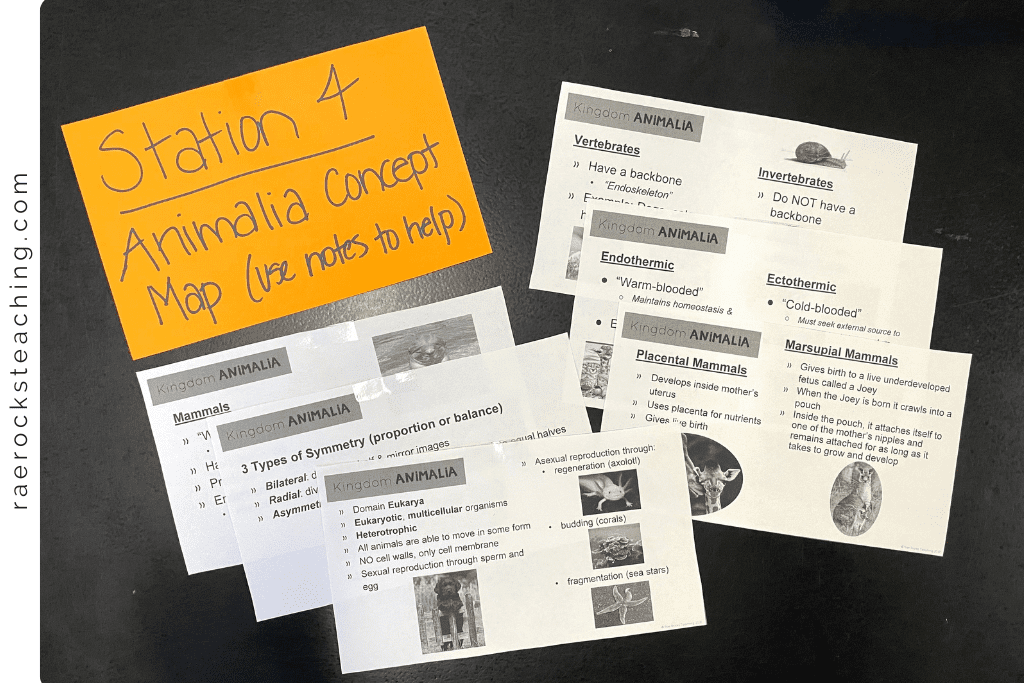
-
Save
Station 5: Crash Course Animalia Video
This is a great video students can watch on their own devices by scanning the QR code I made and answering a few questions to accompany it.
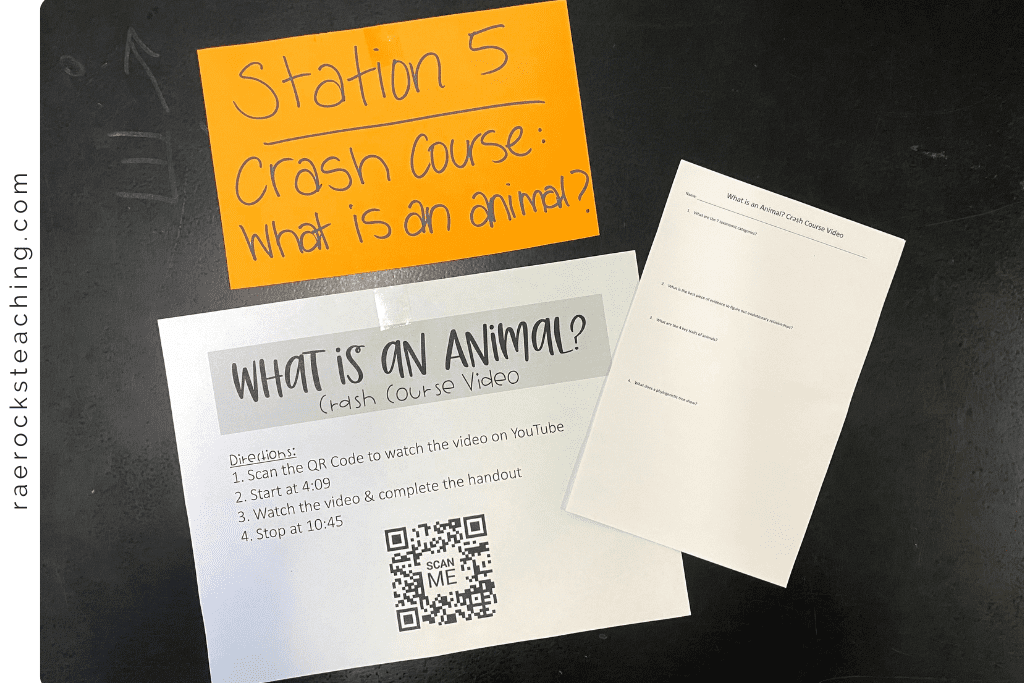
-
Save
Station 6: Amoeba Sisters Plant Structure & Adaptations Video
This is another excellent video summarizing plant structures and adaptations. Again, students can watch on their own devices by scanning the QR code I made and answering a few questions to accompany it.
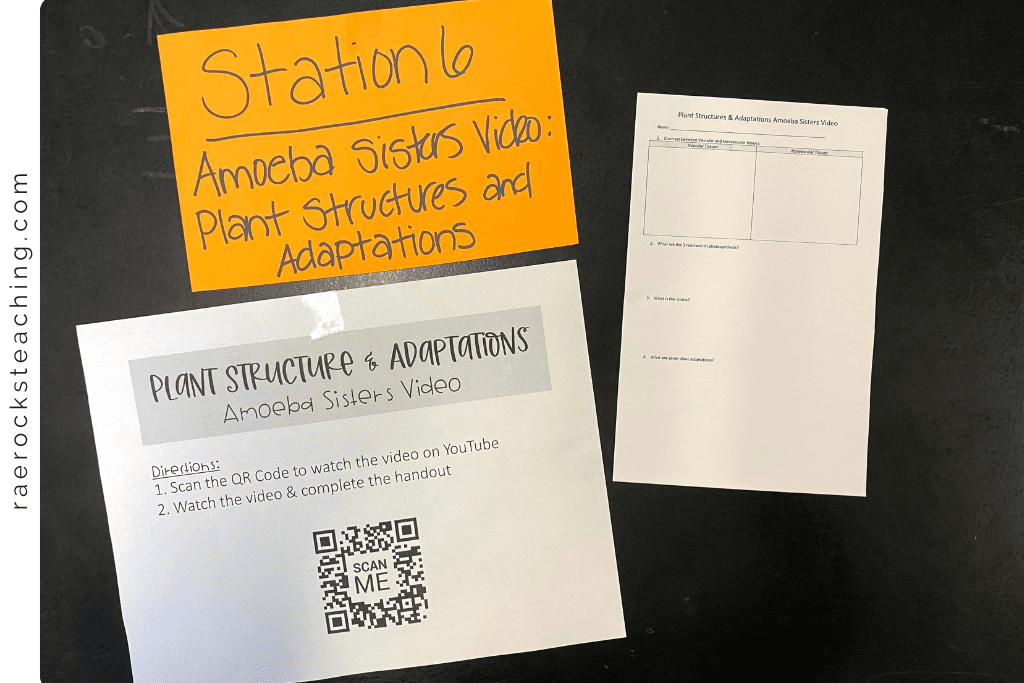
-
Save
Kingdoms Living Organisms Protista and Fungi Stations
Station 1: Protist Reading
Students must read the informational text and answer the accompanying questions.
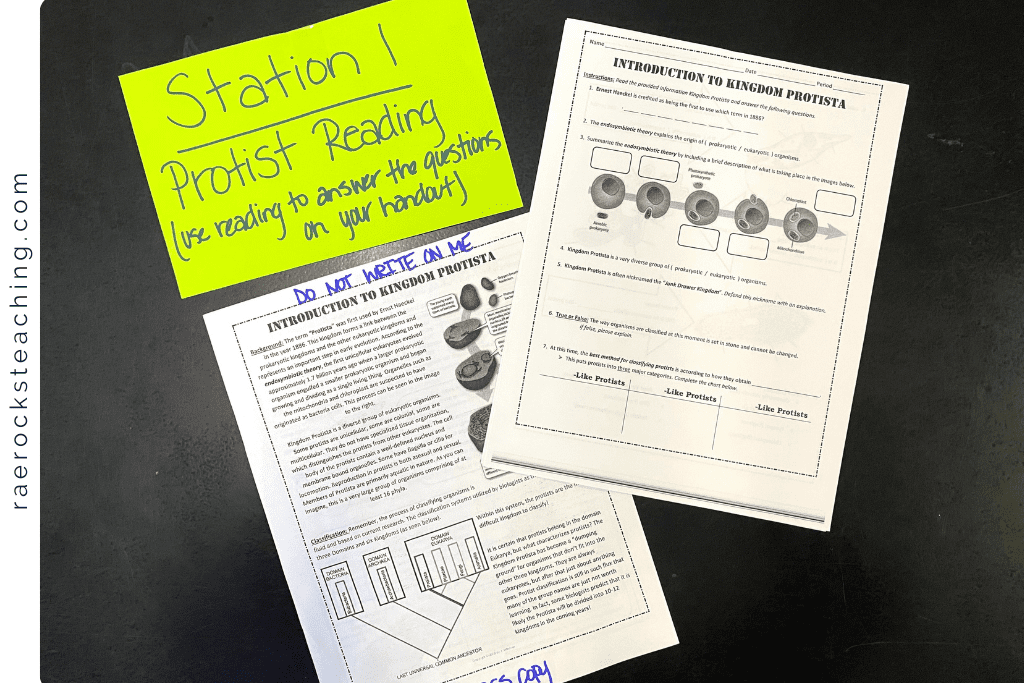
-
Save
Station 2: Protist Concept Map
I have my students complete a concept map on Plantae by using the PowerPoint notes I have laid out for them.
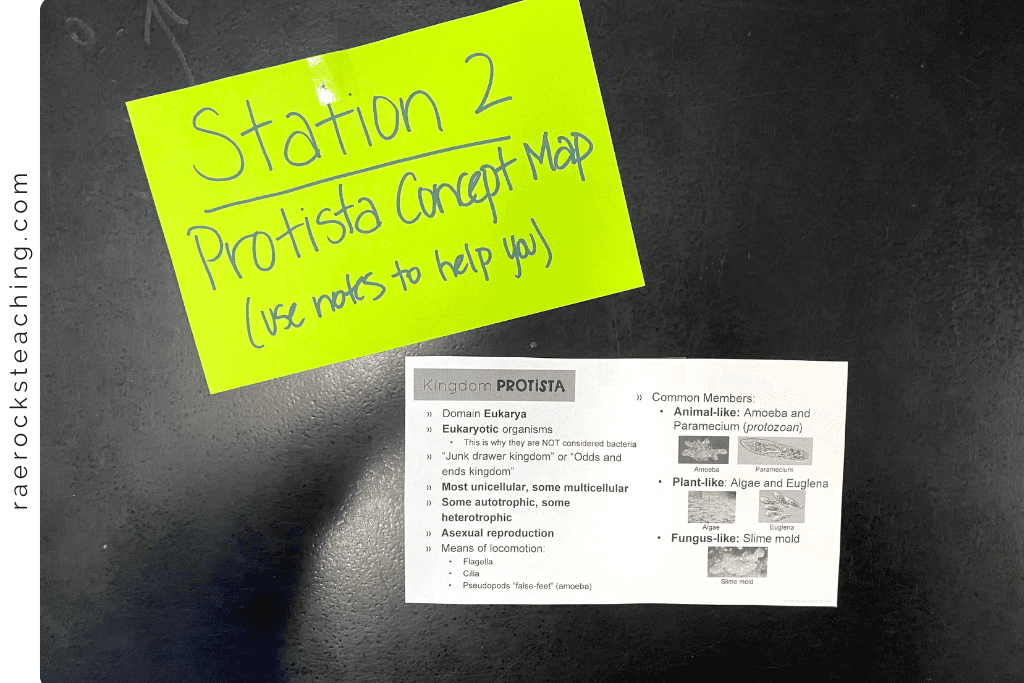
-
Save
Station 3: Fungi Reading
Students must read the informational text and answer the accompanying questions.
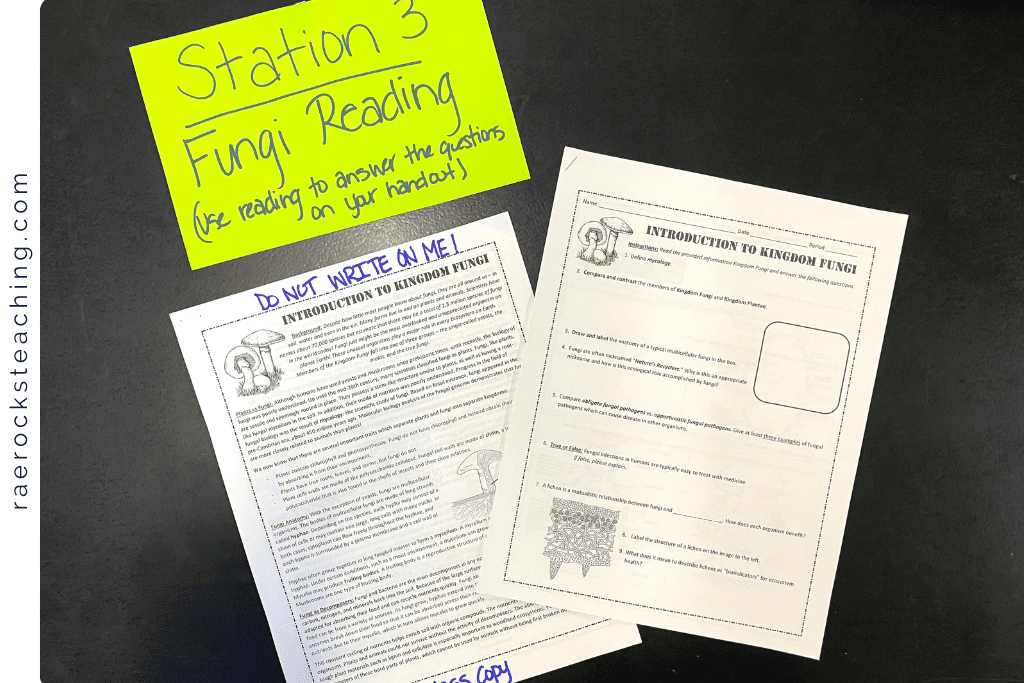
-
Save
Station 4: Fungi Concept Map
I also have my students complete a concept map on Fungi by using the PowerPoint notes I have laid out for them.

-
Save
Station 5: Amoeba Sisters Protista & Fungi Video and Handout
This is a great video students can watch on their own devices by scanning the QR code I had them complete the Amoeba Sisters handout that goes along with the video.

-
Save
Station 6: Fungi Foldable
This foldable summarizes the characteristics of fungi that they collected information from their biology textbook.
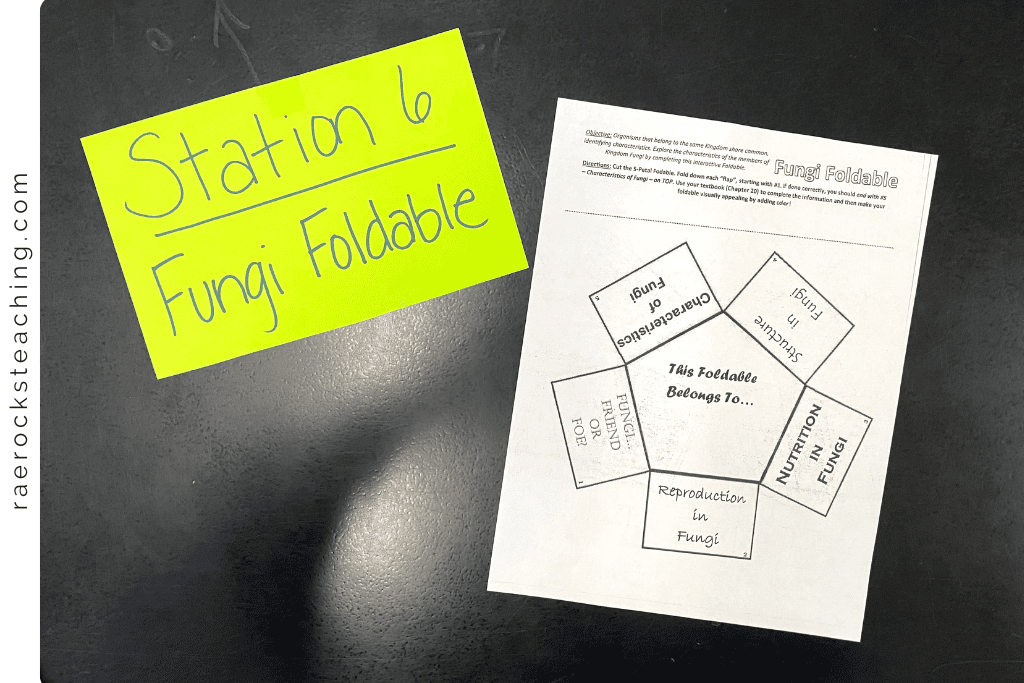
-
Save
How I Run the Kingdoms of Life Stations
First, I explain how the stations are going to work. I tell them it doesn’t matter which order they go in as long as ALL of the stations for the day are completed. Even though I give them another half-day to finish them, I do not let them know this ahead of time. This keeps them focused knowing it is time sensitive. Second, I broke them down into groups. I just told them how many students needed to be in each group and let them pick their own. Normally, I set a timer for stations for students to rotate to the next. However, this time I let them work at their own pace, which works really well. After day one is completed, I tell them to hold on to their assignments so we can do the other kingdoms the next day.
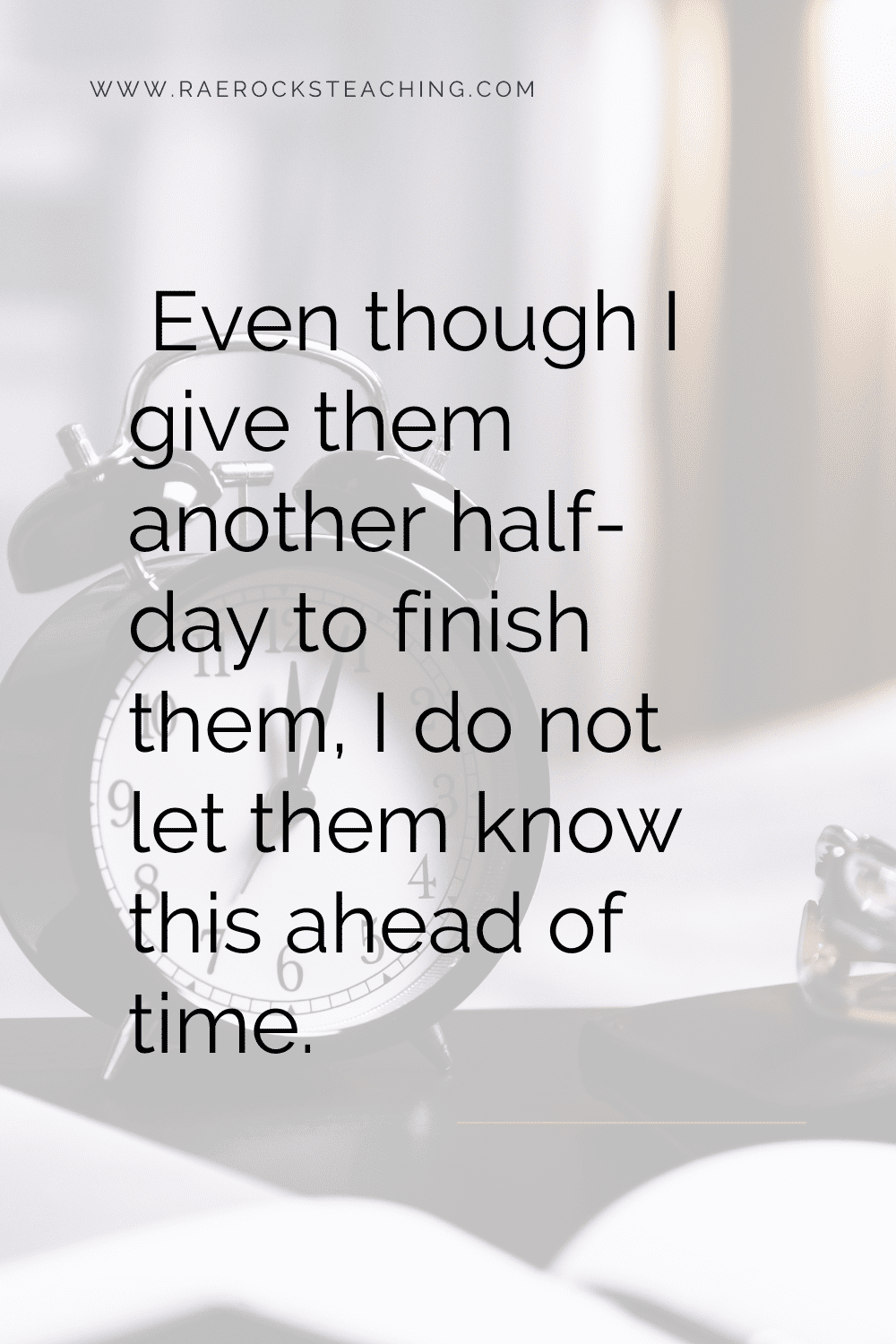
-
Save
On day 2, we do the last 6 stations for the other 2 kingdoms. Once time is up, I ask who needs more time to complete stations from either day. Most all of them raise their hand. I tell them to keep their work and we will finish it the next day. After Day 3, I have students PAPERCLIP all of their work together, because when they get it back after it has been graded, I don’t want it to rip while they are trying to study it.
What do you think about teaching kingdoms living organisms as stations? Let me know!
Don’t forget to sign up for the Flip the Script Digital Course Waitlist!

-
Save
I love sharing helpful content with y’all and would love to connect on IG or Facebook. I’m on TikTok too! Follow me and send me a DM with what you need more of because I’m here to help! If you are looking for even more inspiration, find me on Pinterest!
Wanna read more?
A Creative Way for Students to Learn What Are the Effects of Bacteria
How to Teach Without Lecturing: Try These 3 Things in Science Instead
Share via:

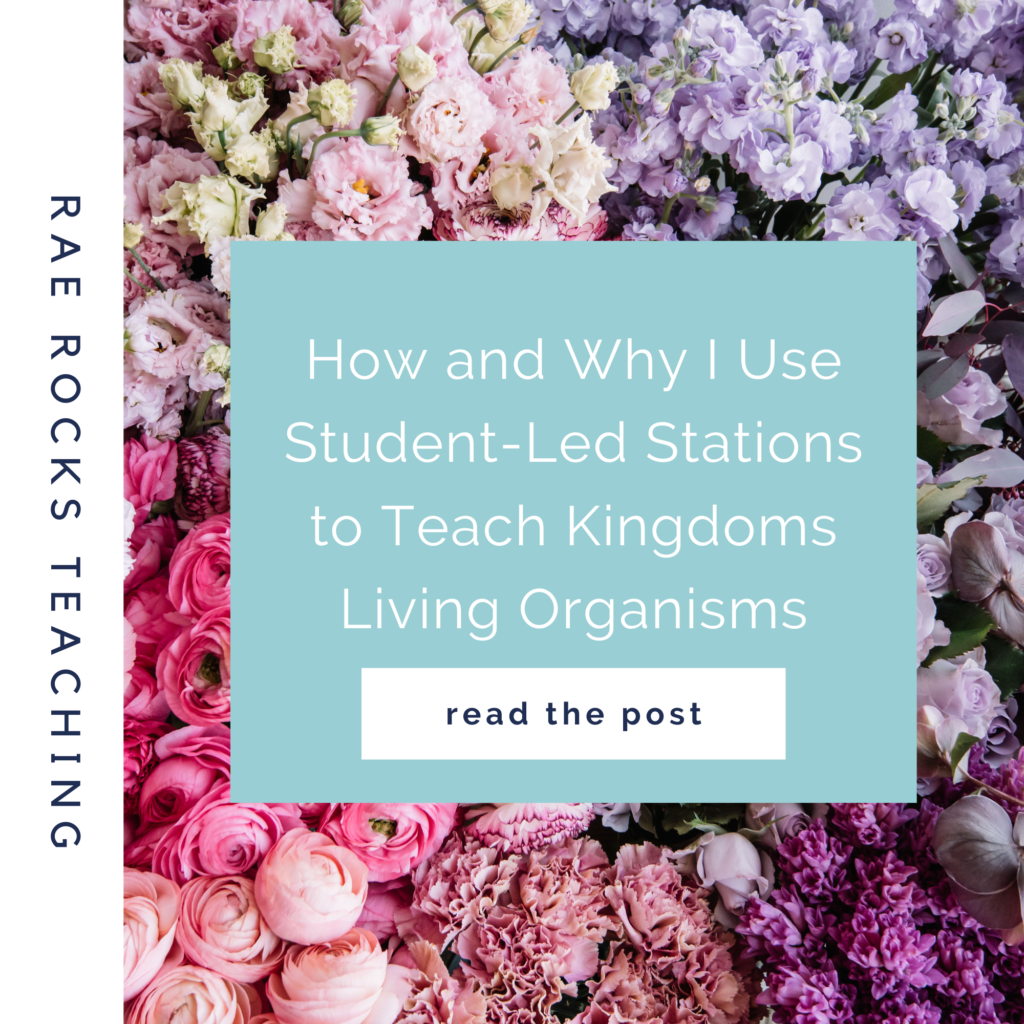







2 Responses
Hey, I love using stations, however over here in the UK we tend to call them fact finders. My biggest issue is timing. Some kids whiz through the activity and some drag their feet (classic). I have provided extension tasks but they see through me and then end of ‘taking their time’ .
How long do you give at each station and how do you overcome this issue.
Thanks Beth – Greater Manchester UK